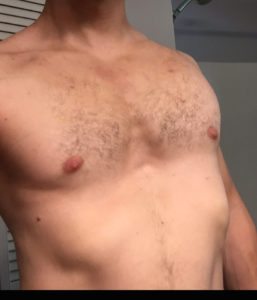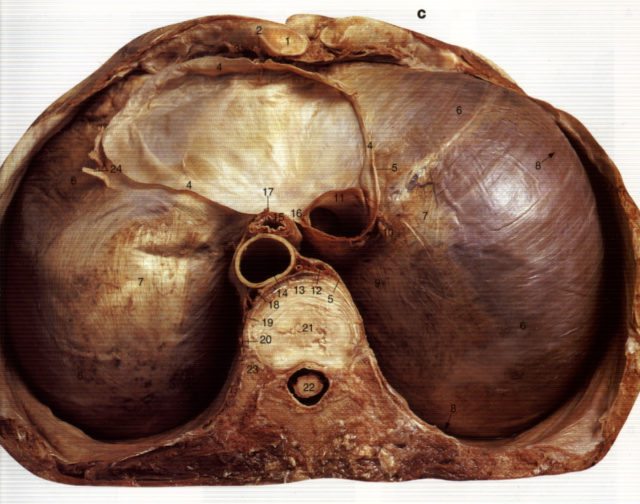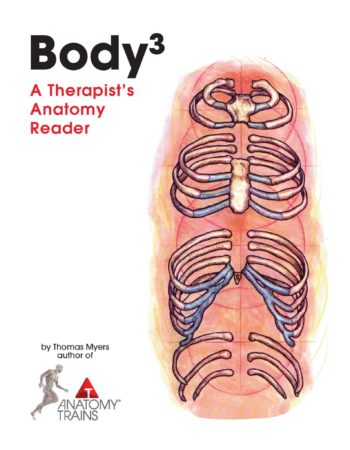Read this exchange between Tom and a follower about his pectus excuvatum.
Hello Tom,
I have pectus excuvatum. I’ve read your 3D book (Body3) and half way through Anatomy Trains. Those books are great and I will likely need to read them three more times to fully absorb everything. Because of your work I have a deeper understanding of the body that other books failed to deliver.
At one point I was all about getting surgery and went for all the pre tests. I’ve done in depth studying on muscle/bones and movement for art and animation. For exercise, I lift weights. It’s a simple lifting routine based on progressive overload with the majority of the lifts using the barbell and dumbbell free weights. And only around 3 exercises per workout. I also do melt with the foam roller and balls. I just recently learned how to truly walk and breathe. To walk by rotating the torso (like in martial arts for structure) and breathe by using my abdomen and nose.


I was wondering if there’s any exercises I can do or manual therapy on myself that will help open up the sternum and ribs. Or something I can do to breathe better?
Hello,
You seem to be in good shape but for the extreme shortness between your sternum and thoracic spine along the the central tendon of your diaphragm.
Working from the outside on this is difficult, and the best place for SMR (tennis ball or similar) along the angle of the ribs in back – right at the border between the back muscles and where you can feel the ribs – go up and down there – not on the sides, not on the spines, but in between, southeast and southwest.
To open the tendon is a matter of the primal scream, best induced through rebirthing / holotropic breath work / whatever it’s being called these days. You need a guide for that, preferably experienced.
-Tom
I found the tendon in Netters. It looks like a V shaped parachute with a hole on one side. I’m assuming mine is really thin and tight or something? I have a hard rubber tool and was wondering if it would work on the thoracic angle area.
Thanks Tom!

This wonderful photo from McMinn (it’s in my book) shows the diaphragm going from the xiphoid process at the bottom of the sternum in front to the front of the thoracic spine in back – this is the fascia that is ‘short’ (actually everything else just grows bigger around it) in cases of pectus excavatum. As you can see, it runs right under the heart and includes the esophagus and blood vessels, so having it that tight ain’t great for one’s physiology, as well as actual breathing, as well as looks. Because it is inside the thoracic cavity, you have to approach it from a visceral and a ‘re-breathing’ point of view.
Yes, a tool like that is fine for your back ribs I was talking about – but don’t use tools on your front near your diaphragm – you may negatively affect your solar plexus, and you won’t like the results.
A competently trained visceral osteopathic bodyworker can help you some, but this is mostly deeply biophyscological – you had (this is me going out on a limb, may be wrong) a deep scare when very young. As a result, the central tendon of the diaphragm was permanently tensed in shock, so it stopped growing as fast as the rest of you. So it didn’t shorten per se, it just didn’t grow as much as a the rest of your ribs, but the net result is a short tendon in the A-P direction.
It will feel like a big relieving sigh when that tendon opens. But don’t be surprised if there is accompanying fear or terror as you get into the breathing.
Tom
Recommended
Bodyᶟ (Color Illustrations)
$54.95Bodyᶟ is Tom’s regional anatomy– used as a text in our ATSI structural integration training— each chapter covers a region of the body in terms of the bones, joints, muscles and fascial structure embedded in Tom’s unique view of evolution and development. Newly revised and updated for 2014, with a new introduction, clearer text, and… Read more
Add to cart






